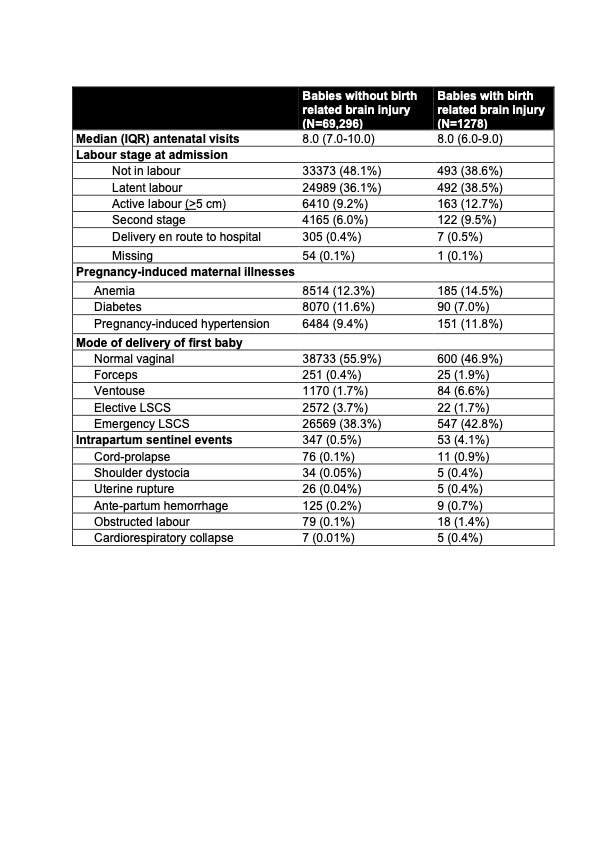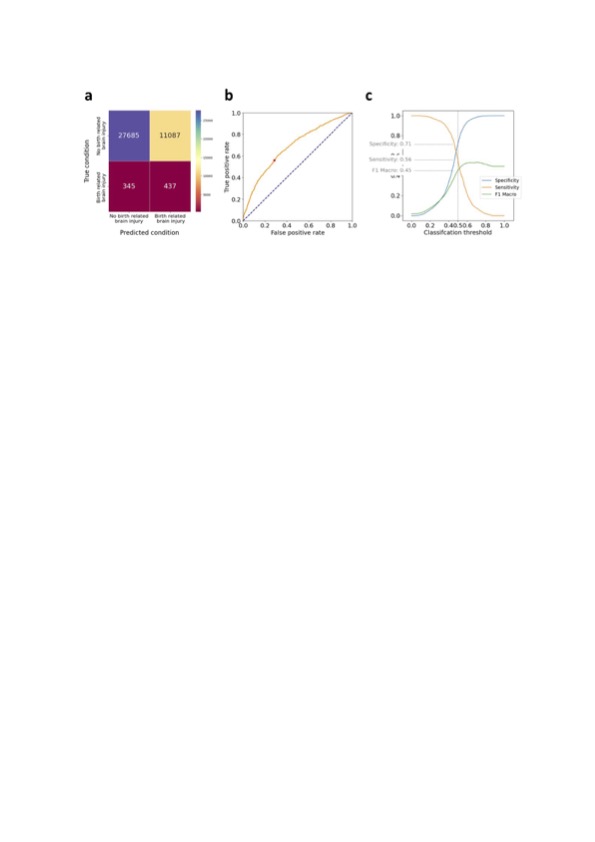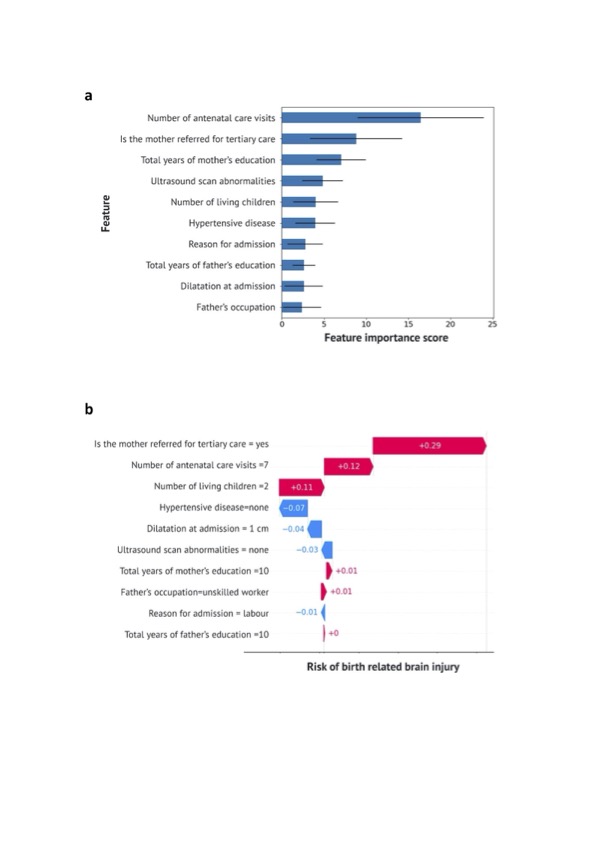Neonatology
Session: Neo-Perinatal Health Care Delivery 1: Epidemiology/Health Services Research
319 - Pre-labor risk prediction of birth related brain injury using artificial intelligence.
Saturday, May 4, 2024
3:30 PM - 6:00 PM ET
Poster Number: 319
Publication Number: 319.1185
Publication Number: 319.1185

Pallavi Muraleedharan, BSN, MHA (she/her/hers)
PhD Student
Imperial College London
London, England, United Kingdom
Presenting Author(s)
Background: Although 3 to 4 million term babies sustain birth related brain injury every year in low- and middle-income countries, current pre-labor maternal clinical assessment do not predict the risk of brain injury during birth.
Objective: We examined if integration of socio-economic, nutritional, health system, and antenatal clinical data using artificial intelligence can predict the risk of birth related brain injury at the time of labor room admission
Design/Methods: We conducted a prospective study involving all mothers admitted for birth > 35 week gestation at three large public tertiary maternity hospitals in South India between July 2020 and February 2023. Birth related brain injury was defined as encephalopathy or seizures occurring within 72 hours of birth. Stage of encephalopathy was graded using modified Sarnat staging by certified examiners. We used Catboost, a state-of-the-art gradient-boosted ensemble model to predict the probability of birth related brain injury from variables available at the time of labor room admission. For enhanced transparency and interpretability of predictions, local SHapley Additive exPlanations (SHAP) were computed
Results: A total of 70, 574 were recruited over a two-year period, of which 1278 (1.84%) had birth related brain injury. Over 90% of the babies with birth related brain injury did not have maternal high-risk factors or intrapartum sentinel events (Table 1). The data from the first 38,994 births (1.8 % had birth related brain injury) comprising 347 features (138 categorical, 185 numerical, and 24 text fields) were used in the machine learning analysis.
The 5-fold cross-validated results mean (SD) showed an area under curve (AUC) of 0.7 (0.02), Balanced Accuracy of 0.64 (0.02), and F1-Macro of 0.45 (0.01) (Fig 1). The negative predictive value of the model was 98.8% (95% CI 98.7 to 98.9%). Subsequent to determining the feature importance scores (Fig 3a), a simplified model was developed leveraging the top 10 features resulting in an AUC of 0.69 (0.02), Balanced Accuracy of 0.63 (0.01), and F1-Macro of 0.44 (0.01), thereby affirming the potential for easy and effective deployment in the clinical setting. An example of explainability and individual prediction is shown in Fig 3b.
Conclusion(s): Our model, utilizing artificial intelligence based on easily obtainable ante-natal features was able to predict occurrence of birth related brain injury in Indian public sector tertiary maternity hospitals at the time of labor room admission.



